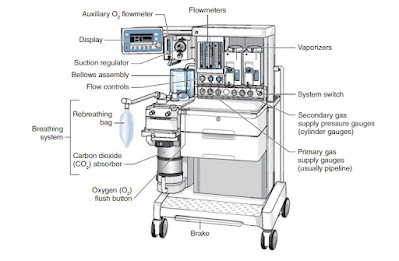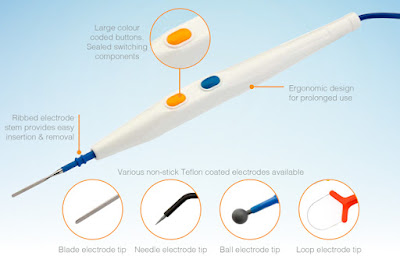Indications and Findings of Preoperative Radiological Examinations
Preoperative radiologic examinations are diagnostic imaging tests used to evaluate a patient's anatomy and function before surgery. These exams help identify any underlying conditions that may affect the surgical procedure, assist in surgical planning, and help predict potential complications. The type of radiologic test ordered depends on the patient's medical history, the type of surgery being planned, and institutional protocols.
Here’s an overview of common preoperative radiologic examinations:
1. Chest X-ray (CXR)
Purpose: To assess the lungs, heart, and bones of the chest.
Indications:
For patients over 50 years of age or those with respiratory, cardiac, or other chronic diseases.
Preoperative screening in patients undergoing major surgery or those with a history of smoking.
Findings:
Can reveal pneumonia, congestive heart failure, lung masses, or abnormal heart size.
Important for detecting undiagnosed pulmonary conditions that may require attention during anesthesia or surgery.
2. Electrocardiogram (ECG or EKG)
Purpose: To assess the electrical activity of the heart and identify arrhythmias, ischemia, or other heart-related issues.
Indications:
For patients with a history of heart disease, chest pain, or those over 50 years old.
Necessary for patients undergoing surgeries where general anesthesia is required, as these can stress the heart.
Findings:
Can identify arrhythmias, ST segment changes (indicating ischemia), or signs of previous heart attacks (myocardial infarction).
3. Abdominal X-ray
Purpose: To evaluate the organs and structures in the abdomen, particularly when there is concern about gastrointestinal or urinary tract issues.
Indications:
In patients undergoing abdominal or pelvic surgery.
To rule out bowel obstructions, free air (perforation), or kidney stones.
Findings:
Can show gas patterns (e.g., bowel obstruction), masses, or free air in the peritoneum (which can indicate perforation).
4. Ultrasound (US)
Purpose: A non-invasive imaging technique that uses sound waves to create detailed images of organs and tissues.
Indications:
Abdominal ultrasound for liver, gallbladder, kidney, pancreas, or spleen issues.
Pelvic ultrasound for female patients to assess the uterus and ovaries, or prostate in men.
Vascular ultrasound to assess blood flow, particularly in cases of deep vein thrombosis (DVT) or arterial disease.
Findings:
Can detect masses, cysts, fluid collection, organ enlargement, or blood flow abnormalities.
5. Computed Tomography (CT) Scan
Purpose: Provides cross-sectional images of the body using X-rays and computer processing. It is more detailed than regular X-ray.
Indications:
For complex abdominal, chest, or pelvic surgeries.
For evaluating tumors, abscesses, vascular issues, and complex fractures.
In patients with suspected cancers, infections, or vascular abnormalities.
Findings:
Can detect tumors, organ enlargement, vascular abnormalities, infections, or trauma. It is commonly used in emergency situations or for preoperative staging of cancers.
6. Magnetic Resonance Imaging (MRI)
Purpose: Uses magnetic fields and radio waves to produce detailed images of soft tissues. It is particularly useful for imaging the brain, spinal cord, muscles, joints, and soft tissue structures.
Indications:
For spinal surgeries, joint surgeries, or when soft tissue abnormalities are suspected.
For brain surgery planning or to assess neurological conditions.
Findings:
Can provide detailed views of soft tissues, detecting tumors, spinal cord abnormalities, joint issues, or nerve compression.
7. Bone Scintigraphy (Bone Scan)
Purpose: A nuclear imaging test that uses radioactive tracers to detect bone diseases.
Indications:
For detecting bone infections, cancers, or fractures not visible on regular X-rays, especially in patients with metastatic cancer or unexplained bone pain.
Findings:
Identifies areas of increased bone activity (which may indicate infection, inflammation, or tumor spread).
8. Mammography
Purpose: A specific type of X-ray used to detect breast cancer.
Indications:
For women undergoing surgery, especially in those with a history of breast cancer or significant risk factors.
Findings:
Can identify masses, microcalcifications, and other abnormalities in the breast tissue.
9. Pelvic X-ray or Ultrasound
Purpose: To evaluate the pelvic organs, including the uterus, ovaries, and bladder.
Indications:
For gynecological surgeries, such as hysterectomy, or in cases of suspected pelvic tumors or cysts.
Findings:
Can detect abnormalities in the uterus, ovaries, and other pelvic organs.
10. CT Angiography or Magnetic Resonance Angiography (MRA)
Purpose: Detailed imaging of blood vessels, useful in assessing vascular anatomy, aneurysms, or blockages.
Indications:
For patients undergoing surgery involving major blood vessels or those with vascular disease.
Findings:
Can reveal blockages, aneurysms, or abnormal vascular formations.
11. Dental X-rays
Purpose: To assess the health of teeth and jaw structures.
Indications:
For patients undergoing surgery involving the head, neck, or requiring general anesthesia (to identify any potential dental issues).
Findings:
Can reveal abscesses, cavities, or infections that may need to be addressed before surgery.
12. Doppler Ultrasound
Purpose: Measures the flow of blood through blood vessels, helping to detect deep vein thrombosis (DVT) or arterial blockages.
Indications:
For patients with risk factors for DVT or those who may require prolonged immobilization during surgery.
Findings:
Can detect blood clots or narrowing/blockages in veins and arteries.
Summary of When Radiologic Exams are Ordered:
Chest X-ray: Preoperative screening for lung and heart issues.
ECG: Heart rhythm and function evaluation.
Abdominal X-ray/CT: For gastrointestinal or abdominal surgery or conditions.
Ultrasound: Non-invasive imaging for abdominal, pelvic, and vascular issues.
CT/MRI: Detailed imaging for complex conditions, tumors, or organ abnormalities.
Bone Scan: For detecting bone metastasis or infection.
Mammography: For patients with a history or risk of breast cancer.
Doppler Ultrasound: To assess blood flow and detect clots in veins/arteries.
These radiologic tests help to detect existing issues that may affect the surgery or anesthetic management and provide critical information that guides surgical decision-making and reduces the risk of postoperative complications. Depending on the patient's clinical history and the planned procedure, not all tests may be necessary. It is always important to tailor the preoperative radiologic workup to the individual patient.


